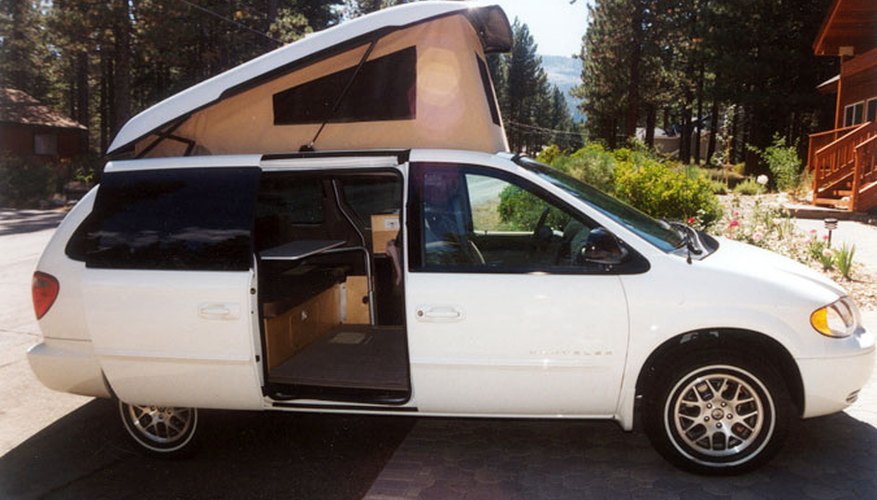Minivans make excellent choices for camper conversions, as their small size and economy work to their advantage. The most famous of all minivan conversions is the Volkswagen Transporter Type 2 Bus Westfalia edition. With it's pop-top canvas roof and tiny kitchenette, this basic camper spawned thousands of variants of van-based custom campers. The average backyard mechanic can convert a minivan into a camper in about a week.
Choose a suitable conversion. Some vans are designed low to the ground, with soft suspensions that lend great highway use, but do not provide off-roading capabilities. If the camper is to be used in remote locations, then a four-wheel-drive minivan would be ideal. Many common minivan models will have 4WD options for any particular year, and these make great conversions. The cargo capacity should also be important, and will prove itself to be more comfortable as a camper.
- Minivans make excellent choices for camper conversions, as their small size and economy work to their advantage.
- Many common minivan models will have 4WD options for any particular year, and these make great conversions.
Remove all rear seats and clear the minivan of any interior parts. Many minivans will have armrests, cup holders, clothing hooks and shelving built into their cargo areas that must be taken out. Seats can be removed as necessary, but they can remain if they fold into a bed and do not interfere with kitchen equipment.
Determine where the support beams of the body are located, then cut the roofline for the fibreglass top's hole. This can be tricky, as many vans are different. A pop top provides standing room and ventilation, and can be purchased at specialised camper stores or by catalogue. The main parts of a camper's pop-top roof are the fibreglass shell, a canvas midsection and support struts. An electric hand saw with a metal cutting blade can make short work of most roof sheet-metal; bending the lip down over itself then applying a rubber gasket will ensure a professional look.
- Remove all rear seats and clear the minivan of any interior parts.
- A pop top provides standing room and ventilation, and can be purchased at specialised camper stores or by catalogue.
Mount the struts for the top. These will be bolts that fasten the steel struts to the vehicle, as the fibreglass top is not directly bolted to the roof. These struts will usually be spring-loaded to provide assistance when lifting the top. Some drilling may be required to mount the struts to the roof; using self-tapping metal screws is an effective shortcut. Once the struts are in place, follow the camper top manufacturer's instructions for placing the canvas and fibreglass.
Install the bed and kitchen equipment. If the rear seat is being used as the bedding surface, then the kitchen area will be behind the driver. Some kitchens will have a sink and a stove, while optioned models can have a powered refrigerator as well. There should be two holes drilled into the van's body: one for sink drainage on the floor, and one for appliance intake lines on the side. The stove will typically use propane gas, and the tanks for these must be mounted on the outside of the van if they are to be permanent. Most van conversions will have these tanks mounted underneath the body. The bed area can be a simple mattress, or can be built out of plywood with shelves and entertainment features at the discretion of the converter.
- Mount the struts for the top.
- The stove will typically use propane gas, and the tanks for these must be mounted on the outside of the van if they are to be permanent.
TIP
Use old camper-van parts for an easy conversion
WARNING
Do not install a pop-top camper on a van with rear A/C, as these air ducts typically run through the roof.
